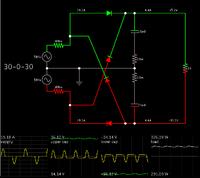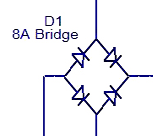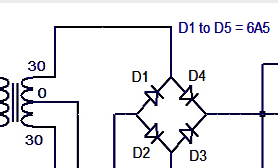dvijaydev46
Newbie level 4

Hi,
I'm planning to build this amplifier https://www.circuitstoday.com/150-watt-amplifier-circuit . Since I'm going to make a stereo amp, I need to double the power rating of the power supply given there and here. I would like to know the following:
1. Should I go with a 30-0-30 10amp or 12amp transformer?
2. What diode should I use for the bridge? (please recommend a 15amp diode)
3. Can I use two P600A diodes in parallel for the bridge?
Thanks
Vijay
I'm planning to build this amplifier https://www.circuitstoday.com/150-watt-amplifier-circuit . Since I'm going to make a stereo amp, I need to double the power rating of the power supply given there and here. I would like to know the following:
1. Should I go with a 30-0-30 10amp or 12amp transformer?
2. What diode should I use for the bridge? (please recommend a 15amp diode)
3. Can I use two P600A diodes in parallel for the bridge?
Thanks
Vijay
Last edited:






